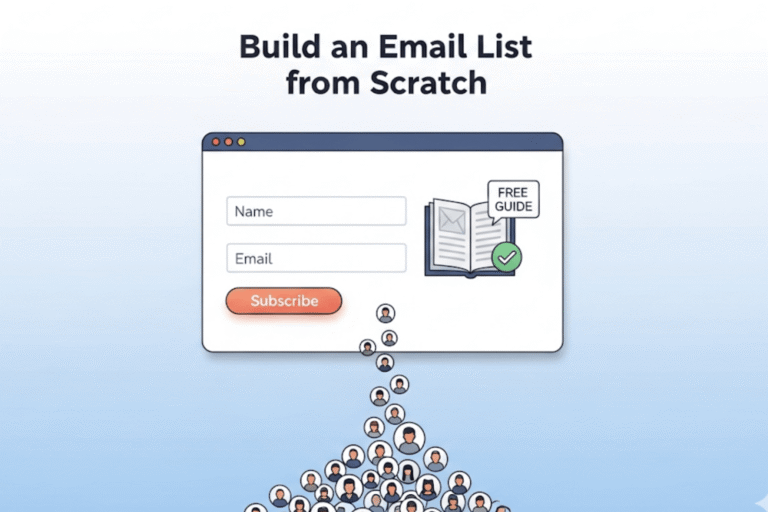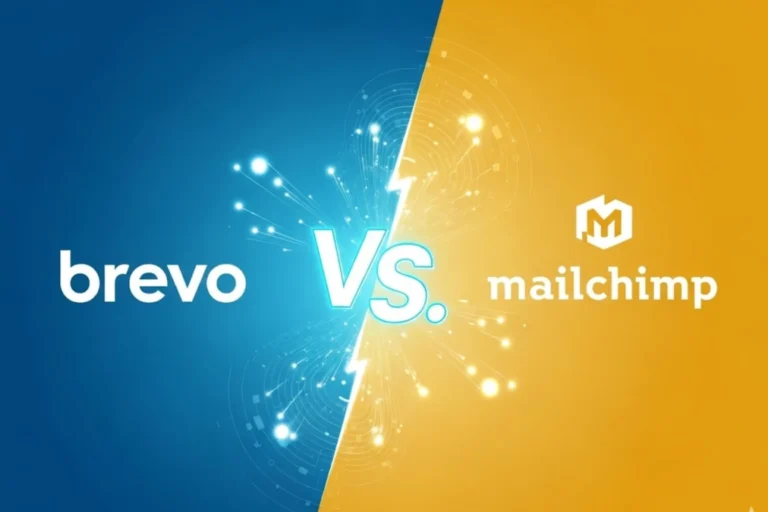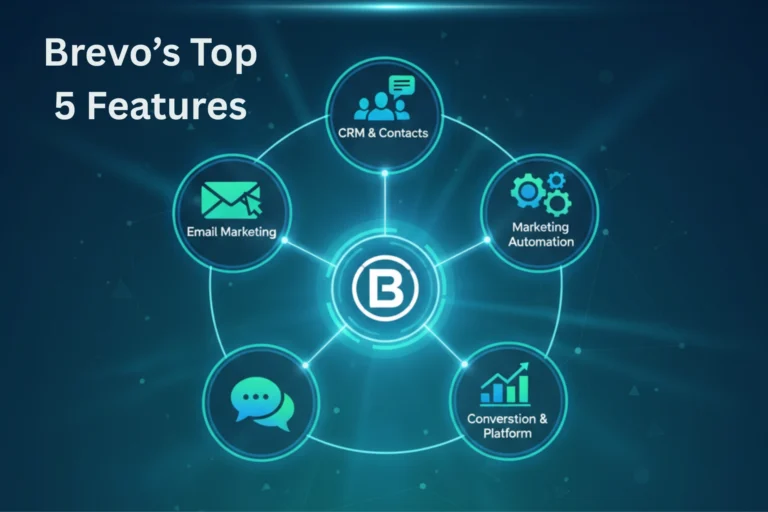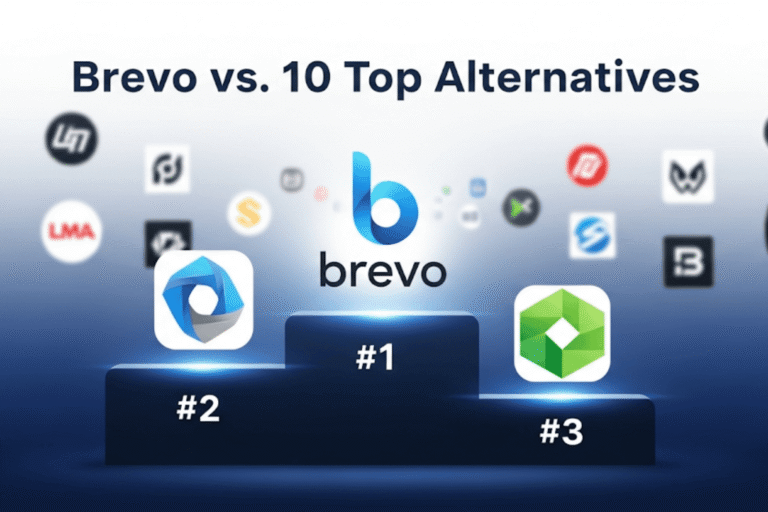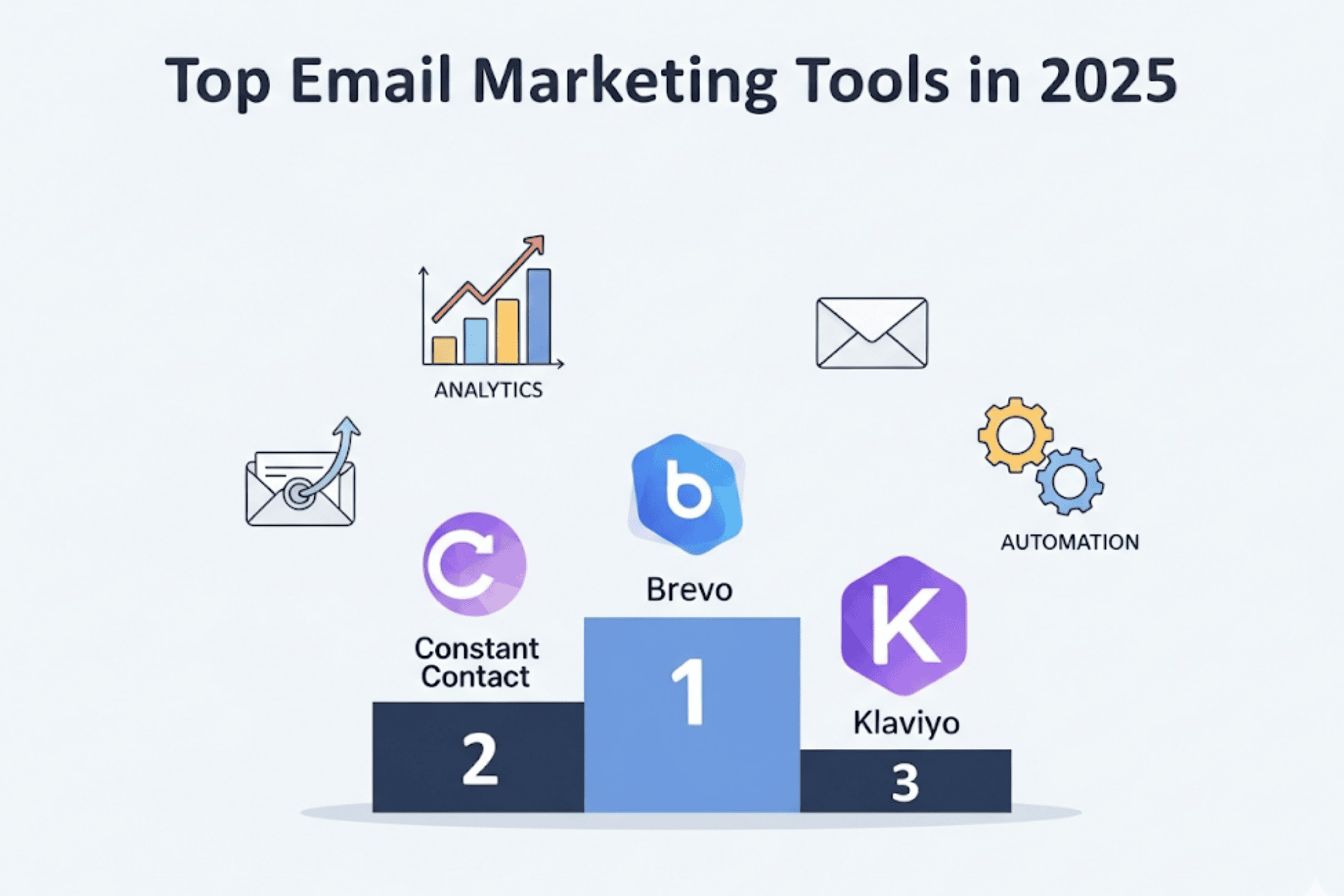You spent hours crafting the perfect email. The subject line is compelling, the copy is engaging, and the call-to-action is crystal clear. You hit “send” to your list of 5,000 subscribers, proud of your work. But what if half of them never even see it?
This is the invisible, frustrating problem of poor email deliverability. It’s one of the most critical and least understood concepts in email marketing.
This guide will change that. We’re going to demystify email deliverability, break down the technical jargon into simple terms, and give you a clear, actionable plan to ensure the emails you work so hard on actually reach their destination: your subscriber’s primary inbox.
What is Email Deliverability (and How is it Different from Delivery)?
First, let’s clear up a common point of confusion.
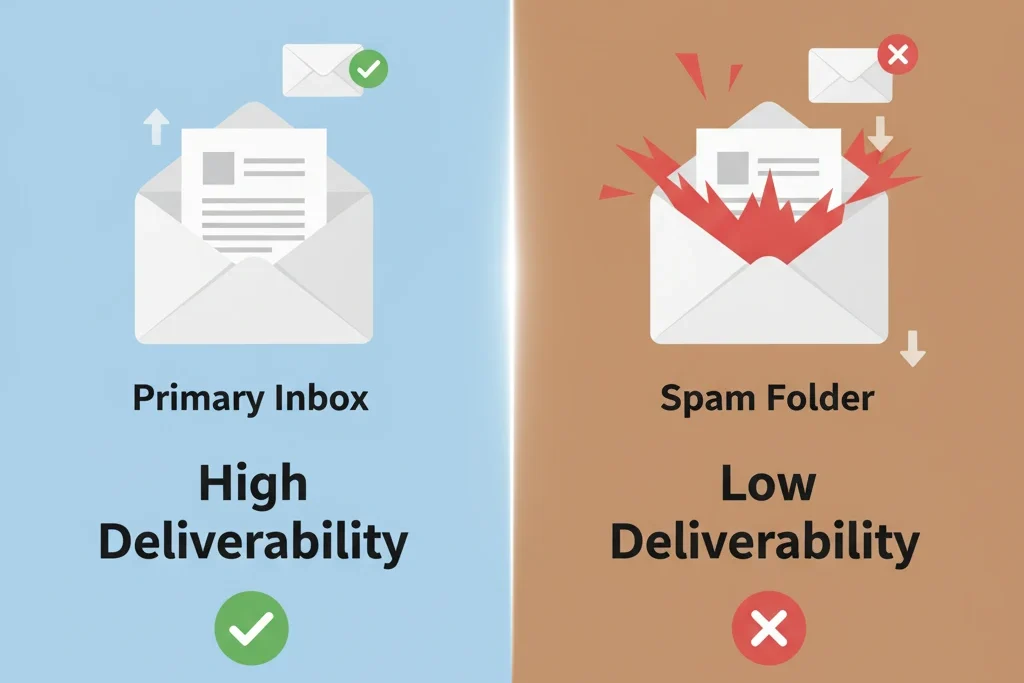
- Email Delivery is when an email is successfully sent and accepted by the recipient’s server. Your email marketing platform might report a 99% delivery rate, but this only means the server didn’t bounce it back.
- Email Deliverability is the art and science of getting your email into the subscriber’s primary inbox, rather than the spam, junk, or (in Gmail’s case) promotions folder.
Think of it like mailing a letter. Delivery is when the mail carrier puts the letter in the mailbox. Deliverability is when the person actually brings it inside, opens it, and reads it. A high delivery rate is good, but high deliverability is what truly matters.
The Most Important Factor: Your Sender Reputation
At the heart of deliverability is your sender reputation. Think of it like a credit score for your email sending practices. Internet Service Providers (ISPs) like Gmail, Outlook, and Yahoo are constantly grading you based on your sending behavior. A high score means they trust you, and your emails get prime placement in the inbox. A low score means they think you might be a spammer, and your emails get sent to the junk folder.
This score is primarily made up of two parts:
- IP Reputation: The reputation of the server sending the email.
- Domain Reputation: The reputation of your specific website domain (e.g.,
yourwebsite.com).
Your actions directly influence this score. Sending emails that people open and click on raises your score. Sending emails that get marked as spam, bounce, or are left unopened will lower it.
The Technical Keys: Understanding Email Authentication
Email authentication is the technical language you use to prove to ISPs that you are who you say you are. It’s like showing your official ID before you’re allowed into a secure building. Setting this up is one of the single most important things you can do to improve your deliverability.
While the acronyms are intimidating, the concepts are simple.
You don’t need to be a technical genius to set these up. A good Email Service Provider will guide you through the process.
How Your Email Service Provider (ESP) Helps You
You’re not in this alone. A high-quality Email Service Provider (ESP) is your most important partner in achieving good deliverability. They handle a lot of the heavy lifting for you.
For example, when you’re starting out, you’ll likely be on a shared IP pool. This means your sender reputation is blended with that of other users on the same server. A reputable platform like Brevo works tirelessly to monitor these pools and remove bad actors, which protects your reputation by association.
Most importantly, platforms like Brevo make it incredibly simple to set up your technical authentication. They provide you with the exact SPF and DKIM records you need to copy and paste into your domain host’s settings. This turns a complex technical task into a simple, 10-minute setup process.
Best Practices for High Deliverability
Beyond the technical setup, your day-to-day practices have the biggest impact.
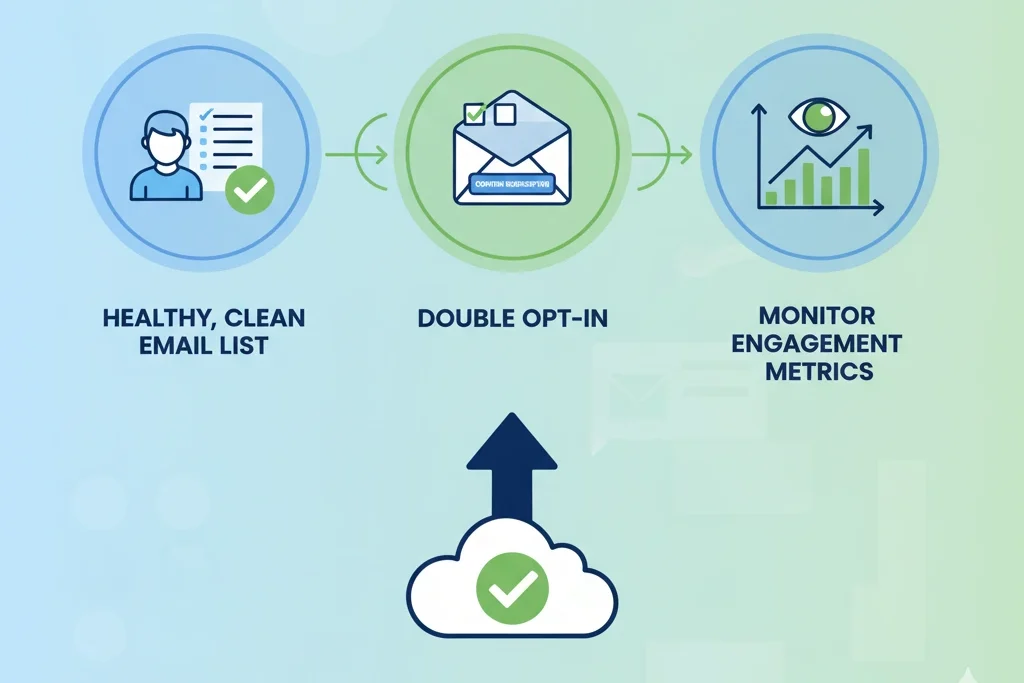
- Maintain a Healthy Email List (List Hygiene): If a large portion of your list never opens your emails, it signals to ISPs that your content isn’t wanted. Regularly remove subscribers who haven’t engaged with your emails in several months (e.g., 6-12 months).
- Use Double Opt-In: A double opt-in process is the gold standard. When someone subscribes, they receive an email asking them to click a link to confirm their subscription. This ensures every subscriber on your list genuinely wants to be there and eliminates fake or misspelled email addresses.
- Monitor Your Engagement Metrics: ISPs are watching. High open rates and click rates are powerful positive signals that your emails are valuable. Consistently low engagement is a major red flag that can hurt your sender reputation over time.
Your 5-Step Deliverability Audit Checklist
Use this simple checklist to audit your own email practices today.
- [ ] Is your domain authenticated (SPF & DKIM)? Check your ESP’s settings. This is non-negotiable.
- [ ] Are you using a double opt-in process for new subscribers? If not, implement it immediately.
- [ ] Do you regularly clean your email list of inactive subscribers? If it’s been over a year, now is the time to do it.
- [ ] Is your unsubscribe link easy to find in every email? Hiding it leads to spam complaints, which is the fastest way to destroy your reputation.
- [ ] Are you monitoring your bounce and complaint rates? High rates are an early warning sign of a deliverability problem.
Conclusion: Taking Control of Your Inbox Placement
Email deliverability isn’t a one-time fix or a technical trick; it’s an ongoing practice built on a simple foundation: sending valuable, wanted emails to an engaged audience that gave you permission to contact them.
By authenticating your domain, keeping your list clean, and focusing on engagement, you are sending all the right signals to ISPs. You now have the knowledge to take control of your sender reputation and significantly improve the chances of your emails landing where they belong: the inbox.
Common Questions:
1. How can I check my email deliverability? You can’t see a single “deliverability score,” but you can measure it by tracking key metrics in your email service provider. Look at your open rates, click-through rates, bounce rates, and spam complaint rates. A steady decline in open rates is often the first sign of a deliverability problem.
2. What is a good email deliverability rate? While it varies by industry, a good goal is to have an inbox placement rate of 95% or higher. This means that for every 100 emails you send, 95 or more are successfully landing in a primary inbox rather than a spam or junk folder.
3. Do emojis in subject lines affect deliverability? Used in moderation, emojis generally do not hurt deliverability. However, overusing them or using spammy-looking emojis (like 💰🔥🚀) can trigger spam filters. The most important factor is always whether your audience engages positively with your emails.
4. Why are my emails going to the Promotions tab in Gmail? Gmail’s algorithm is very sophisticated and automatically sorts emails it identifies as marketing or promotional into the Promotions tab. This is not the same as the spam folder. While it’s difficult to control, the best way to encourage inbox placement is to create highly engaging content that your subscribers consistently open and reply to.
5. Does a dedicated IP address improve deliverability? For most small businesses, a dedicated IP is not necessary. You will be on a shared IP with other users, and reputable providers like Brevo work hard to maintain the high reputation of those shared IPs. A dedicated IP is beneficial for very high-volume senders (sending millions of emails per month) who want complete control over their own sender reputation.

Hi, I’m Jawad Khalid worked in Digital Marketing and as a content manager. I’ve been testing and reviewing digital marketing software since 2015. My main expertise is taking complex tools and breaking them down into simple, practical reviews. Here, I focus on putting platforms like Brevo through their paces for our own projects to see how they truly perform. I’m excited to share my findings and support you on your marketing journey!

